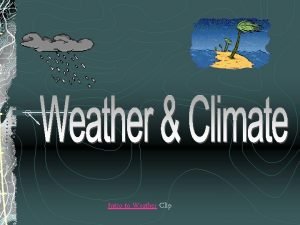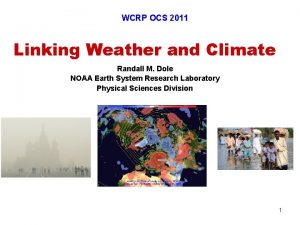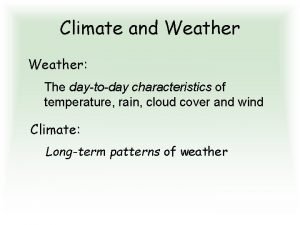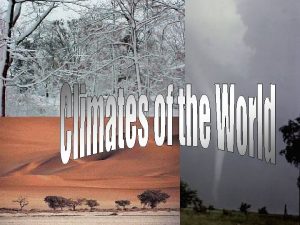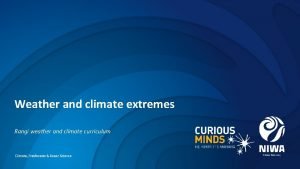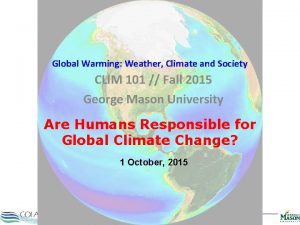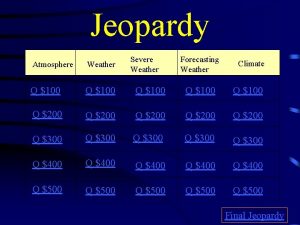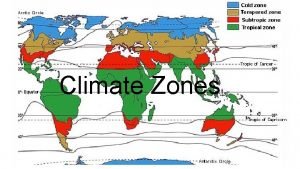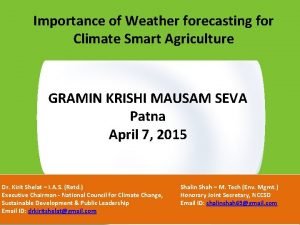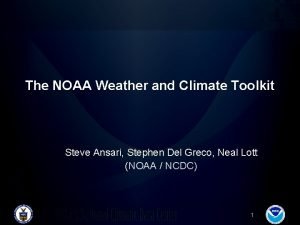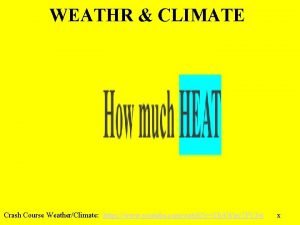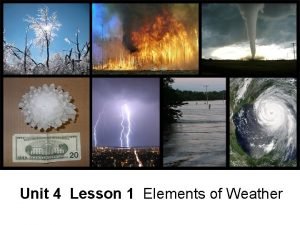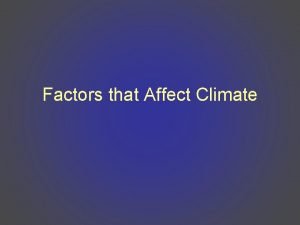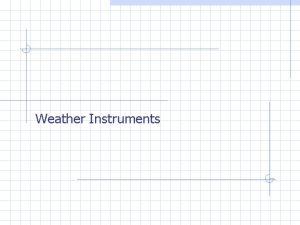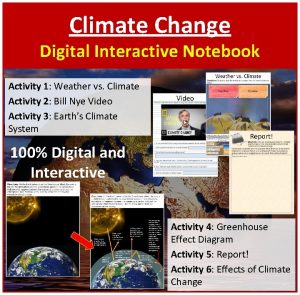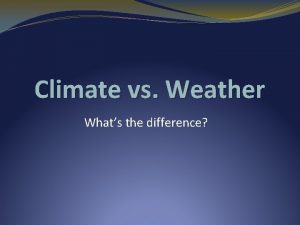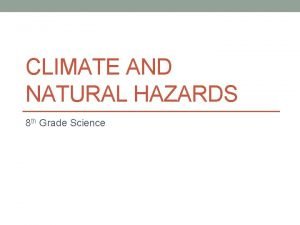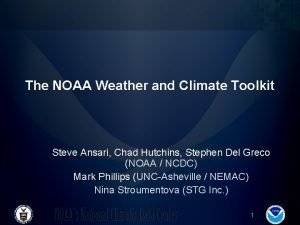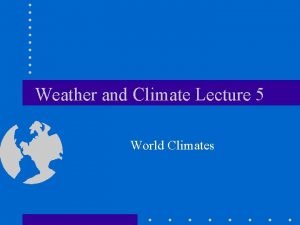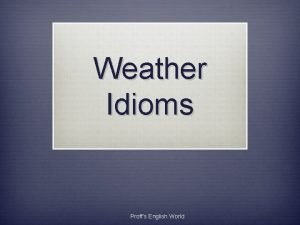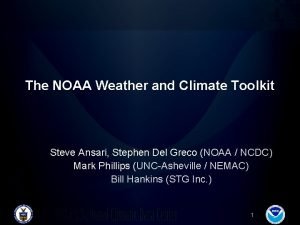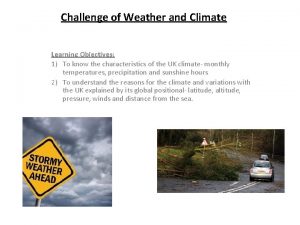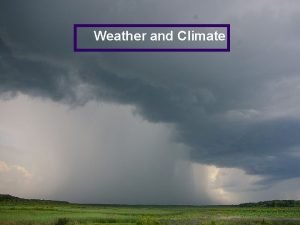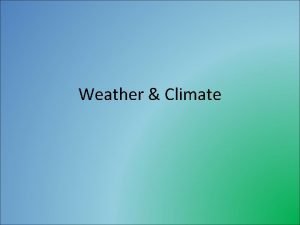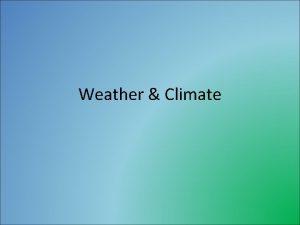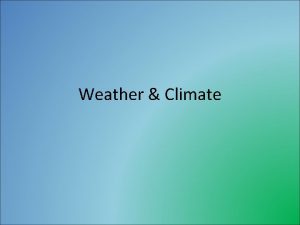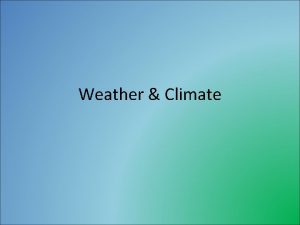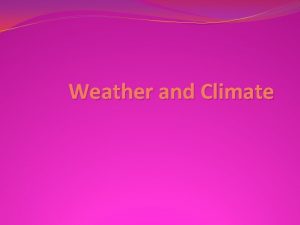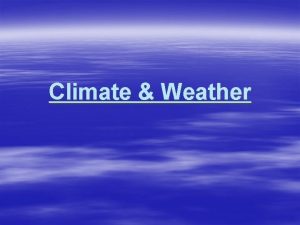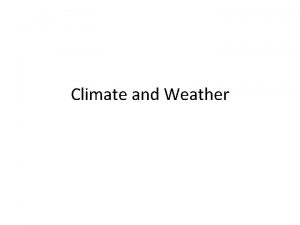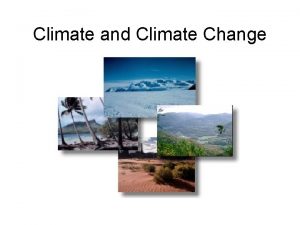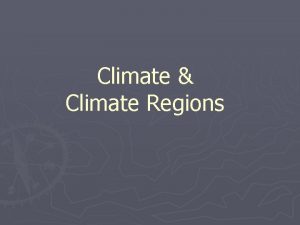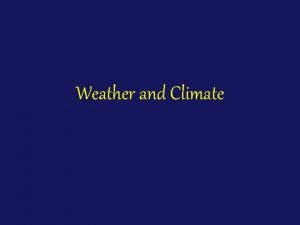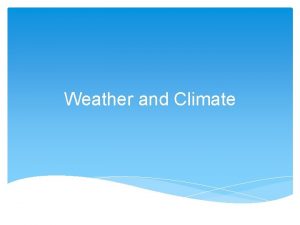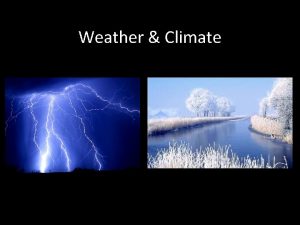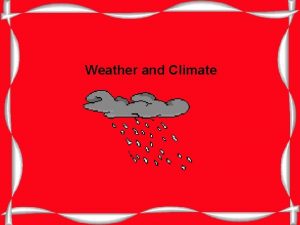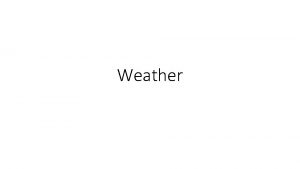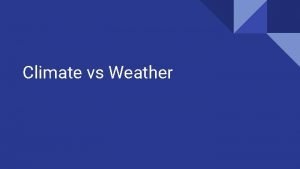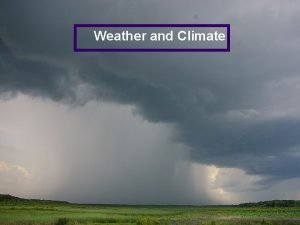A Climate vs Weather Climate is the weather



























- Slides: 27



A) Climate vs. Weather Climate is the weather pattern in one place over a long period of time Weather is the current atmospheric conditions, including temperature, rainfall, wind, and humidity at a given place

�Tilt affects the temperature of places. �Earth makes one rotation on its axis to cause day & night. �Earth takes 365 ¼ days to revolve around the sun. t l i T s ’ n h t o r ti a a E t ) o B R &

C) The Seasons • Earth’s revolution & the tilt create seasons • March 21 st • Sun’s rays fall directly on equator • Equinox (equal night) • Tropic of Capricorn – 23 ½o S • December 22 nd – Winter Solstice • Shortest day of sunlight in northern hemisphere • Tropic of Cancer – 23 ½o N • June 21 st – Summer Solstice • Earth moves so sun falls on this latitude. • Longest day of sunlight in northern hemisphere



Let's see this process in action! Add notes to your diagram as well as the space around it.

D) The Greenhouse Effect Earth’s atmosphere acts as a like in a greenhouse- it traps sun’s energy. Greenhouse Effect Atmosphere provides just the right amount of insulation to promote life. Sun’s radiation turns into heat. Global warming Some scientists believe there is a rise in CO 2 levels (carbon dioxide). More heat is trapped.

Why Global Warming? Human activities Burning of coal, oil, and natural gas releases CO 2 Or is this phenomenon a natural occurrence?



E) Factors Affecting Climate

LEMPOS!!!

Factors Affecting Climate • L : Latitude • rays of sun & how it strikes the earth • low latitudes get sun year-round (hot all year) • Middle latitudes (tropics to poles) are temperate • Great temperature shifts • True seasonal changes • High latitudes (Arctic & Antarctic Circles) – Cold all year

Factors Affecting Climate • E: Elevation • atmosphere gets thinner • thinner air retains less heat…not as dense as altitude increases

Factors Affecting Climate • M: Mountain Barriers • Orographic effect (Rain shadow) • Winds with moisture cool as they move up the mountain and dry out – windward side • Weather patterns weaken or are even stopped as they move across the mountains – leeward side

Factors Affecting Climate • P: Proximity (closeness) to water • Water slower to heat than land, so land near water has consistent temperature • Affected by landforms • Tilt of the Earth on its access also play a part

Factors Affecting Climate • O: Ocean currents • Rivers flowing in the ocean - Cold and warm streams of water • • move through oceans (based on earth’s rotation, differences in water temperature, and change in air pressure). Warm waters flow away from the Equator toward the poles; cold water back toward the Equator Wind and ocean currents distribute the sun’s heat through CONVECTION (heat rises…) Global wind patterns work the same way Direct influence on precipitation Prevailing Westerlies Trade Winds Doldrums Trade Winds Prevailing Westerlies

Factors Affecting Climate • S: Storms • El Nino (boy with the warm heart) • • Weather pattern Seasonal rains in the Americas Drought in Australia/Asia Every 2 -7 years • La Nina (girl with the cold heart) • • • Weather pattern Reverse of El Nino Flooding around and toward India Drier on the coasts Certain geographical areas receive more storms than others • Hurricane vs. typhoon • Tornado Alley


F) Types of Climates: Low Latitude – Tropical Hot and muggy all year round. Rain forests – Average annual rainfall varies from about 70 to 100 inches; Average 80 o F for high temperatures Deciduous forests

F) Types of Climates: Low to Mid-Latitudes Little precipitation. Savanna: broad grassland in the tropics with few trees. Steppe climate usually borders desert climates. Desert rainfall is 10 inches (Steppe b/t 10 and 20 inches) Covers 24% of land

F) Types of Climates: Mid-latitude- Mediterranean Warm to hot, dry summers and mild, rainy winters. On the west side of continents (marine west coast) Between 30 degrees and 45 degrees latitude. Southern California and near Mediterranean Sea

F) Types of Climates: Highland In mountainous regions. Humid continental Varies with elevation. Evergreen & Deciduous trees grow at base of mountains.

F) Types of Climates: High-Latitude to Subarctic Short, cool summers and long, bitterly cold winters. Permafrost: permanently frozen lower layers of soil in the tundra and subarctic regions Needle-leaved evergreen trees (coniferous forests) Most precipitation falls in the summer.

F) Types of Climates: High Latitudes to Icecap Coldest on earth. Summer temperatures rarely rise above the freezing point. Supports no vegetation. Precipitation is meager and is almost always in the form of snow.
 Climate change 2014 mitigation of climate change
Climate change 2014 mitigation of climate change What is weather brainpop
What is weather brainpop What happens when the temperature of the air cools brainpop
What happens when the temperature of the air cools brainpop Conclusion of weather and climate
Conclusion of weather and climate We'll weather the weather poem
We'll weather the weather poem What is the red line on a climate graph
What is the red line on a climate graph Climate vs weather
Climate vs weather Weather and climate kahoot
Weather and climate kahoot Weather climate and society
Weather climate and society Weather and climate jeopardy
Weather and climate jeopardy 12 climate zones map
12 climate zones map Contingent crop planning slideshare
Contingent crop planning slideshare Noaa weather and climate toolkit
Noaa weather and climate toolkit Weathr today
Weathr today Weather. lesson 1
Weather. lesson 1 How does wind affect weather and climate
How does wind affect weather and climate Tools to measure weather
Tools to measure weather Weather and climate interactive activities
Weather and climate interactive activities Whats the difference between weather and climate
Whats the difference between weather and climate Venn diagram of heat and electricity
Venn diagram of heat and electricity Bill nye weather and climate worksheet
Bill nye weather and climate worksheet Temperate climate zone for kids
Temperate climate zone for kids Noaa climate toolkit
Noaa climate toolkit Weather and climate similarities
Weather and climate similarities Rains proff
Rains proff Noaa weather and climate toolkit
Noaa weather and climate toolkit Objectives of weather and climate
Objectives of weather and climate Climatell
Climatell


